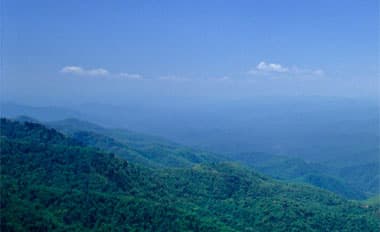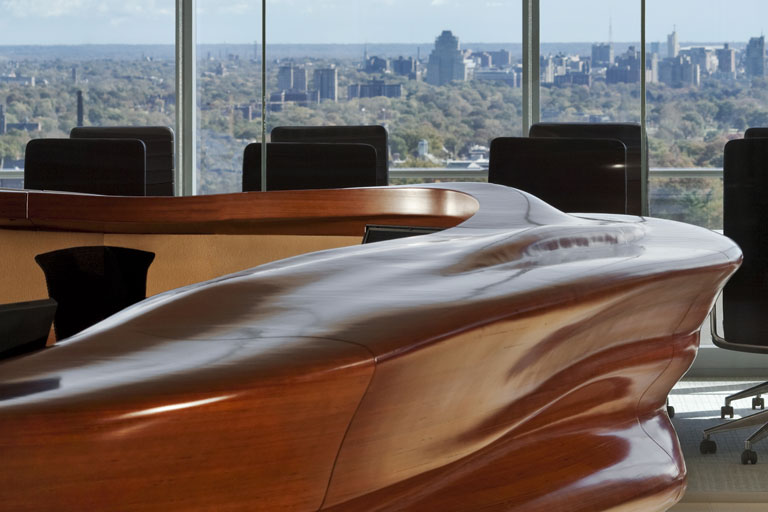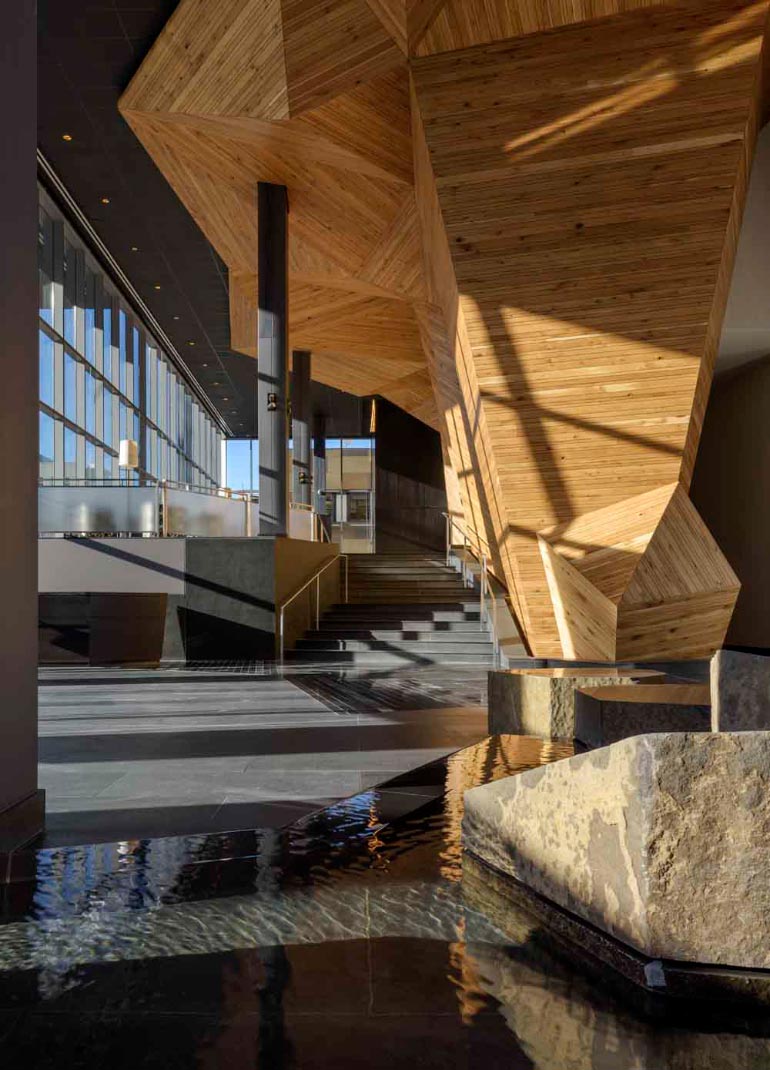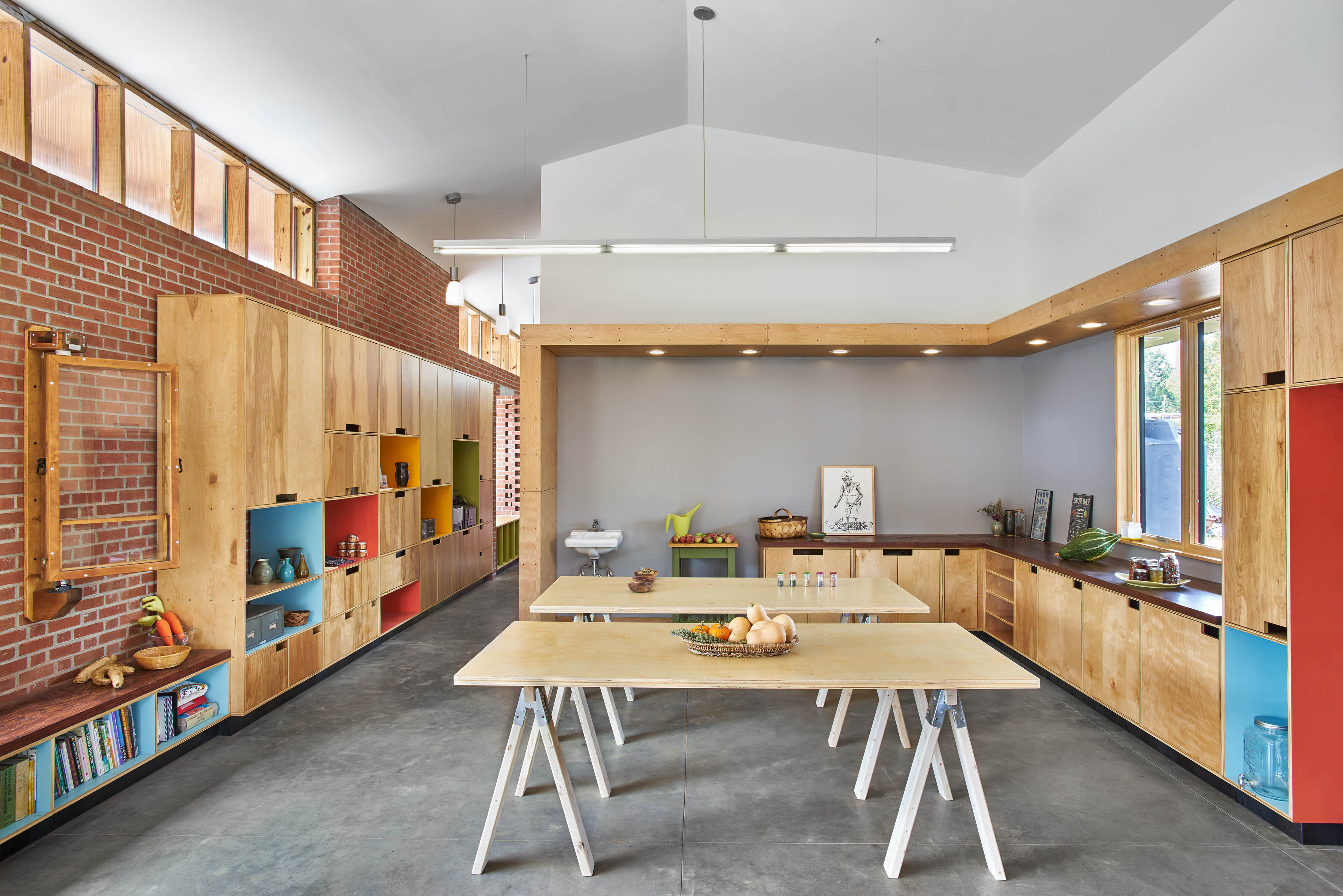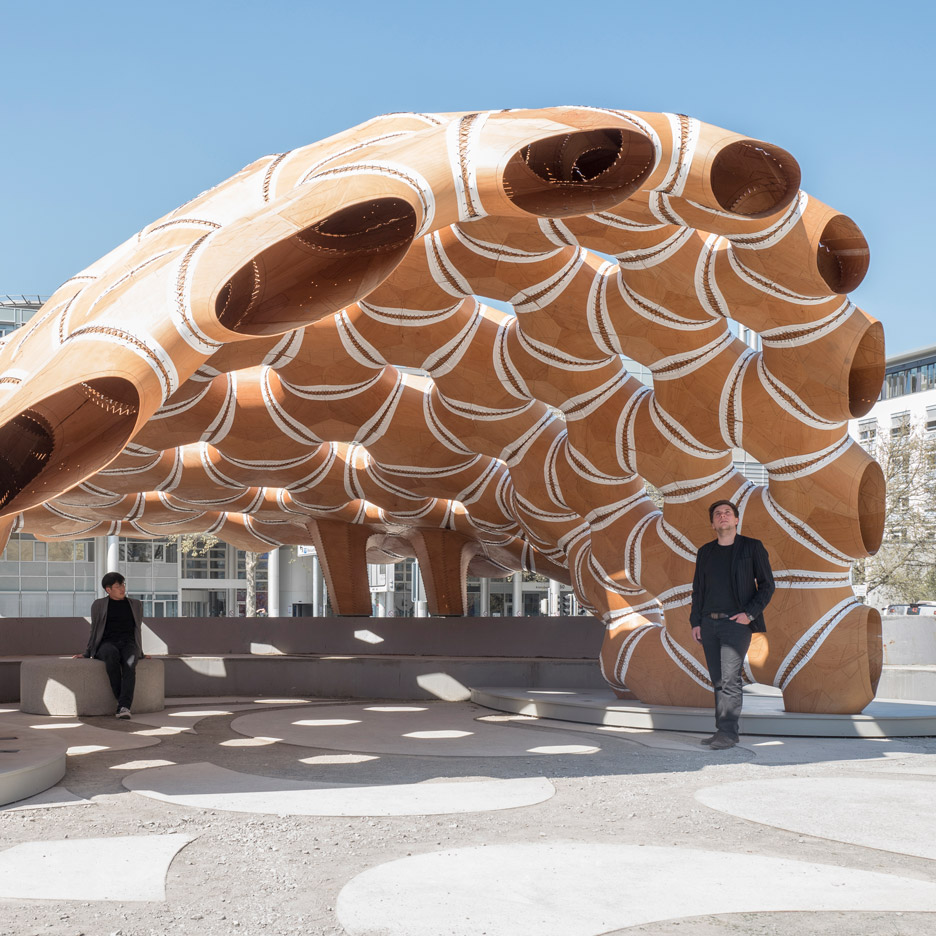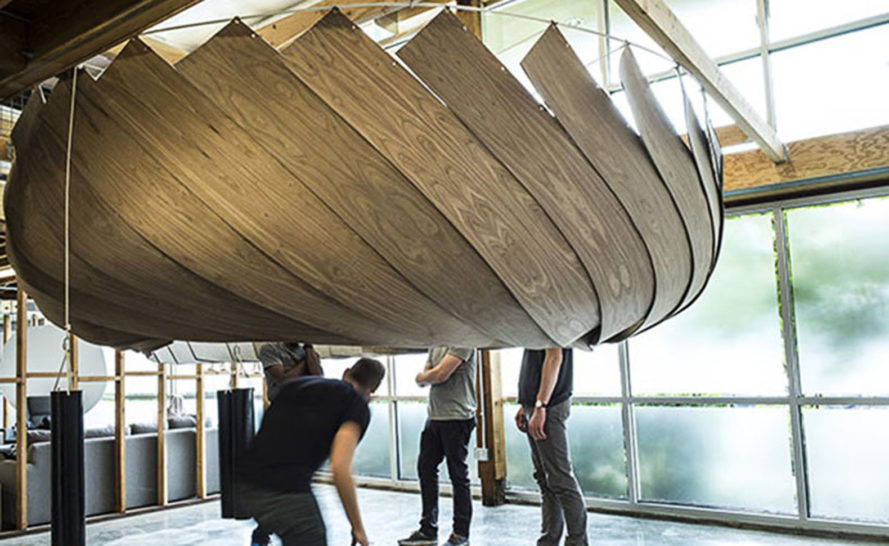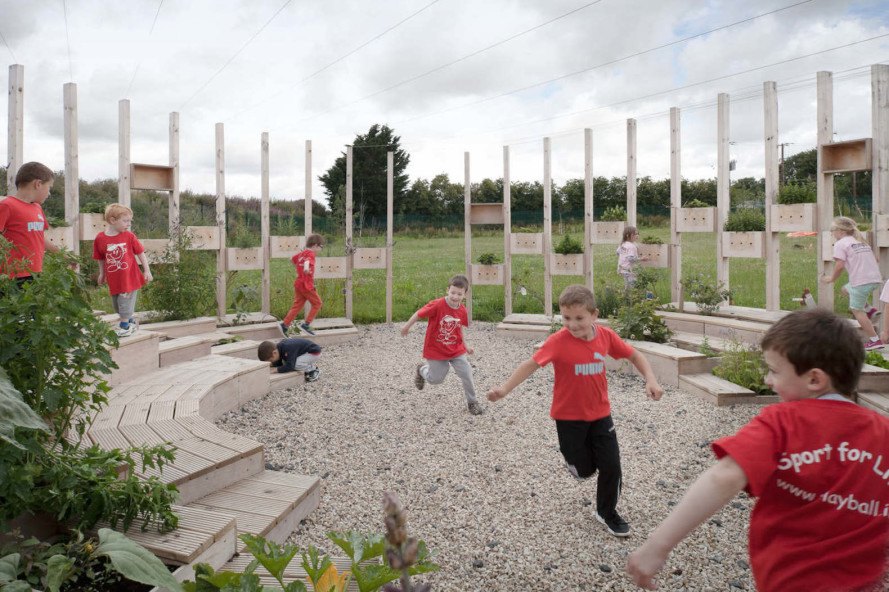6 Commercial Spaces that Highlight Plywood’s Versatility
- June 24, 2019
- •
- by Columbia Forest Products
Plywood may not be the first thing that comes to mind when thinking of cutting-edge architecture and design. But plywood is enjoying a surge in popularity. If it’s not already in your repertoire, it should be. Take a look at these examples of interior and exterior plywood at its best.
1. Distinctive Design
When designing for a law firm, image matters. Clients of the Armstrong Teasdale Law Firm in St. Louis, MO, will undoubtedly be impressed by the elegant table that dominates the firm’s conference room.
The key to projects like this is plywood’s inherent flexibility, which makes it perfect for projects where the design is intended to make a statement. The degree of flexibility can be customized via the thickness of the sheets and whether they’re constructed in a cross-grain manner or with all of the grain running in one direction.
Plywood is also lightweight, which is pretty important in a project like this, since a table this size made of 100% wood would be considered intimidatingly heavy. And the variety of veneers that are available makes plywood perfectly suited to both c-suites and conference rooms.
2. Go Big or Go Home
Large expanses – this is an area where interior, decorative hardwood plywood outshines solid lumber by a mile. It’s tough to assemble solid lumber panels as big as the boards you see in this project – and if you do, you’ll pay a premium. Even then, you may have to discard some of the wood due to knots, cracked edges, and other imperfections. However, since plywood is manufactured, you’ll have no trouble finding sheets large enough for designs where you want to feature natural beauty, with a minimum of visible seams.
3. Building Sustainable Communities
Some projects uphold high standards for environmentally-responsible materials, and one of them is the Beardsley Community Farm Education Center at the University of Tennessee.
Some people assume that because plywood is an engineered product, it wouldn’t make the cut for green design. The reality, however, is very different. Wood that wouldn’t be suitable for projects needing solid lumber can be used to form the inner core of plywood panels. This greatly reduces waste, plus, using products like Columbia Forest Products’ PureBond® hardwood plywood can contribute to LEED credits for projects that seek them.
4. Versatility and Innovation
Not only is this pavilion a breath-taking example of exterior plywood’s versatility, the story behind it is unusual, too. The pavilion’s organic design was created by students and faculty from the University of Stuttgart, who based the concept on the anatomy of a sea urchin.
Plywood’s flexibility allowed for serious innovation in this project, and the design team wanted “to show the potential of computational design, simulation and fabrication processes in architecture.” The team used robots to construct the pavilion, employing advanced technology to mold and stitch together the plywood structure.
This project wouldn’t have been possible if plywood weren’t ideally suited for outdoor use. One drawback of traditional wood construction is its uneasy relationship with moisture and humidity — swelling, shrinking, warping, and bowing in protest. Exterior plywood panels constructed with cross-grained layers are strong and durable, making it less susceptible to environmental factors.
5. Modern Office Solutions
With so many businesses eschewing offices in favor of open floor plans, unoccupied conference rooms can be hard to find. That leaves employees who need a place to have a confidential conversation huddling behind potted plants.
Google and MIT’s Self-Assembly Lab came up with a solution: temporary meeting spaces that employees can pull down from the ceiling whenever they need a quiet conversation. When in use, one of these temporary meeting rooms creates a space 10 feet wide and eight feet tall, suitable for around eight people.
Interconnected fiberglass rods form the structure and are covered with felt on the inside and plywood panels on the outside. Lightweight plywood is essential to the room’s function, making it possible for employees to push the structure back into the ceiling when it’s no longer needed.
6. Sustainable Schools
School construction can be a challenge, primarily due to constraints like cost and safety. But those constraints didn’t get in the way of this award-winning outdoor classroom for a primary school in Carlow, Ireland.
The classroom is created by a circle of exterior-grade plywood columns of varying heights, capitalizing on the material’s affordability as well as its durable nature. And plywood’s sustainability fits right in with the classroom’s “one with nature” theme. Students plant, grow, and eat their own food, watching the plants’ life cycles change with the seasons. Lessons on topics like ecosystems and climate are reinforced by immersing students in the natural environment as they learn.
If you’ve been thinking that plywood is for basic, low-end projects, it’s time to look around. Designers and architects around the world are using plywood’s unique characteristics to redefine the meaning of beautiful, innovative design. It’s a great time to join them!




